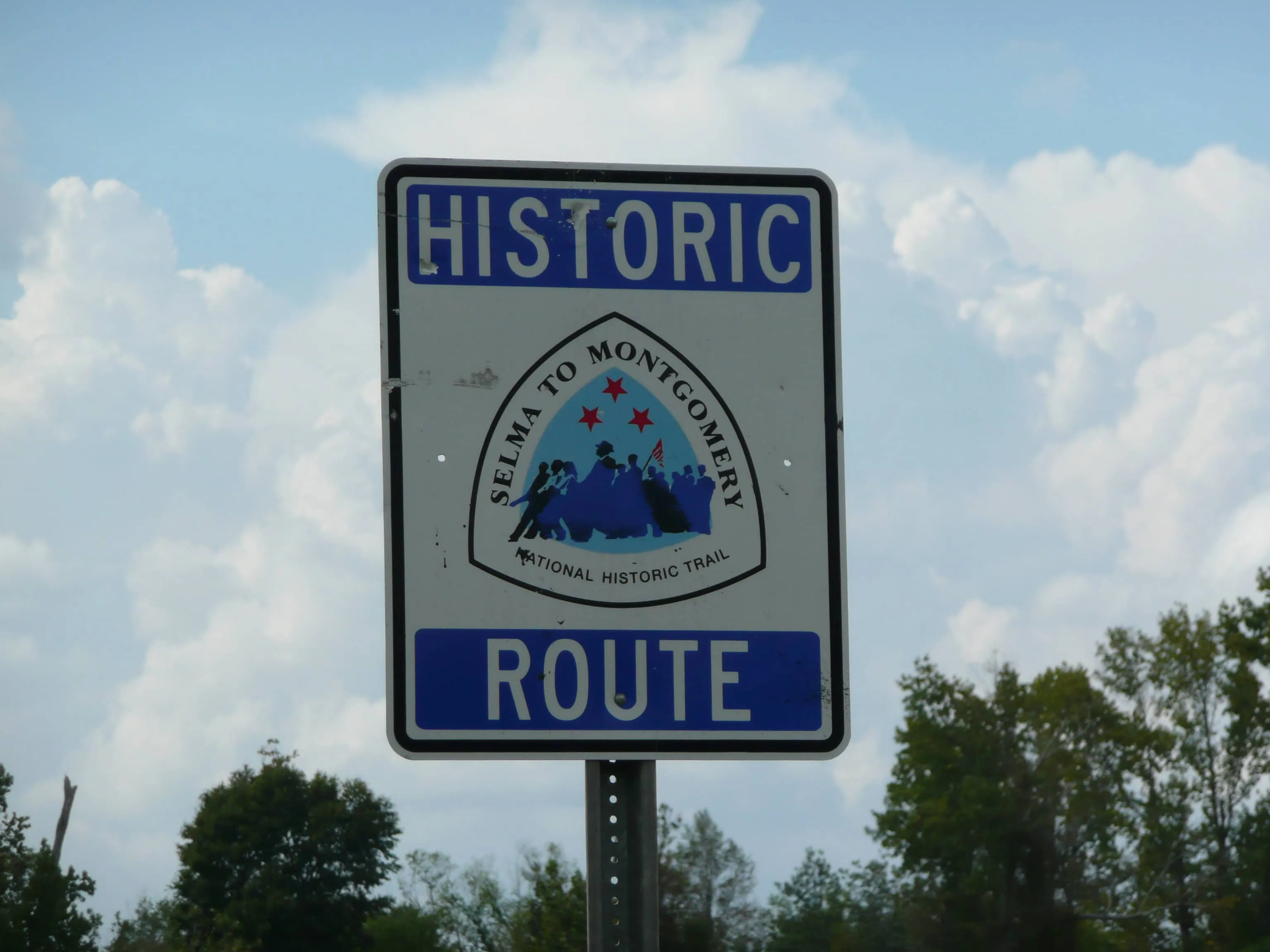Welcome to a journey through one of the most pivotal times in American history: the civil rights movement of the 60s. This era reshaped the national landscape for civil and human rights and set the stage for ongoing movements toward equality and justice.
The Genesis of the Civil Rights Movement 60s
The civil rights movement of the 60s was a pivotal era in United States history, marked by a widespread struggle for racial equality and justice. This movement emerged as a response to the systemic racism and segregation that African Americans faced daily.
Early Influences and Incidents
Several key events in the late 1950s set the stage for the following explosive decade of activism. Among these were the Montgomery Bus Boycott, initiated by Rosa Parks’ courageous refusal to give up her bus seat in 1955, and the formation of the Southern Christian Leadership Conference (SCLC) by Dr. Martin Luther King Jr. Additionally, the sit-in at a Woolworth’s lunch counter in Greensboro, North Carolina in 1960 sparked a wave of similar protests across the country.
Role of Youth and Organizations
The youth played a crucial role in energizing the movement. Groups like the Student Nonviolent Coordinating Committee (SNCC) emerged from the need for a more militant approach to combating racial injustice. Moreover, these organizations helped to orchestrate some of the era’s most significant protests and marches, building a broader national awareness of civil rights issues.
The National Archives provides a robust collection of documents and media from the period, offering insight into the strategies employed by civil rights leaders.
Media’s Impact
Media played an unprecedented role in the civil rights movement, with televised coverage bringing the harsh realities of racial violence into American living rooms. This exposure helped galvanize public opinion and increased support for the movement’s goals.
Events like the Birmingham Campaign and the Selma to Montgomery marches were broadcast, highlighting the courage of protestors and the often brutal response by authorities. The media coverage was instrumental in shaping public perception and influencing legislative changes. To dive deeper into the civil rights era and its legacy, visit this dedicated civil rights organization.
Major Figures and Their Impact
Numerous influential leaders propelled the civil rights movement of the 1960s, whose efforts left indelible marks on American history. These individuals led significant campaigns and inspired generations to continue the fight for equality.
Dr. Martin Luther King Jr.
Dr. King is synonymous with the civil rights movement. His promotion of nonviolent resistance and his powerful oratory skills galvanized public support. King’s leadership in events such as the March on Washington, where he delivered his iconic “I Have a Dream” speech, proved pivotal in the movement’s success.
Malcolm X
In contrast to King’s approach, Malcolm X, a leader in the Nation of Islam, advocated for racial pride and self-defense against racial oppression. His sharp critiques of racism in America and the limitations of the nonviolent approach added a critical dimension to the discourse on civil rights. Explore more about Malcolm X’s philosophy and speeches at the Official Malcolm X Website.
Rosa Parks
Rosa Parks is often celebrated as the “mother of the civil rights movement” due to her pivotal role in igniting the Montgomery Bus Boycott. Her simple act of defiance became a powerful symbol of the broader civil rights struggle.
Cesar Chavez
Though often associated with labor rights, Cesar Chavez also significantly promoted civil rights for Hispanic Americans through his work with the United Farm Workers. His advocacy for nonviolent methods further demonstrates the movement’s cross-cultural influence.
These leaders’ contributions were instrumental in altering the societal structures and attitudes toward race in America. For further insight into their strategies, check out detailed historical accounts. Their stories continue to inspire a commitment to justice and equality across multiple generations and diverse communities, underscoring the enduring impact of their courageous actions during the civil rights movement.
Significant Events That Shaped the Movement
The civil rights movement of the 1960s was marked by several pivotal events that not only captured the nation’s attention but also spurred significant legislative changes. These events highlighted severe inequalities and prompted a push towards justice and equality.
The Freedom Rides
In 1961, interracial groups rode buses into the segregated South to challenge the non-enforcement of Supreme Court decisions that segregated buses were unconstitutional. The riders faced tremendous violence, drawing national attention to the cause.
The Birmingham Campaign
Perhaps one of the most significant confrontations occurred in Birmingham, Alabama, in 1963. Organized by Dr. King and the SCLC, the campaign used nonviolent tactics to protest segregation. The world saw children being hosed down by firefighters, triggering widespread outrage and support for the movement.
The March on Washington
In 1963, over 200,000 people gathered in Washington, D.C., for a peaceful demonstration to advocate for economic justice and civil rights. This is where Dr. King delivered the “I Have a Dream” speech, reinforcing the urgency of civil and economic rights.
Selma to Montgomery Marches
1965 a series of marches highlighted the demand for African American voting rights. Images of peaceful protesters being brutally attacked by police on Selma’s Edmund Pettus Bridge shocked the world and hastened the passage of the 1965 Voting Rights Act.
Each of these events not only underscored the resilience and courage of people united against racial inequality but also helped to significantly shift public opinion and policy. For more details on the timelines and impacts of these events, explore Civil Rights Movement Veterans.
Challenges and Opposition Faced
Despite the strength and solidarity exhibited by participants in the civil rights movement in the 1960s, they encountered significant resistance. These challenges came from various quarters, including legal barriers, violent opposition, and widespread prejudice.
Legal and Political Hurdles
Stringent laws and policies aimed at maintaining segregation and disenfranchisement posed significant obstacles. Jim Crow laws, in particular, were deeply entrenched in Southern states. Efforts to challenge these laws were often met with relentless political resistance.
Violence and Intimidation
Activists were frequently met with violence. This included physical assaults, bombings, and even murders perpetrated by opponents of the movement. Icons like Medgar Evers and activists like the four little girls in the Birmingham church bombing are grim reminders of the risks involved.
Media Bias and Public Perception
Media coverage was biased, often portraying activists negatively. This shaped public perception and sometimes hindered the movement’s progress. Over time, however, the tide of media coverage shifted as the reality of segregation and violence became undeniable.
These obstacles required the civil rights movement to adapt continually. Strategies evolved from direct action to more complex legal challenges and community-based voter registration drives. This adaptability was crucial for overcoming the pervasive challenges of the time. The resilience and tenacity exhibited by participants helped to maintain momentum despite these challenges, ultimately contributing to the success of their cause.
Legal Milestones and Legislative Victories
The civil rights movement of the 1960s garnered social support and achieved significant legal successes that reshaped American law and society.
Civil Rights Act of 1964
This landmark law ended segregation in public places and banned employment discrimination based on race, color, religion, sex, or national origin. It was a significant victory, coming after years of protests and advocacy.
Voting Rights Act of 1965
Another critical victory was the Voting Rights Act of 1965, which aimed to overcome legal barriers at the state and local levels that prevented African Americans from exercising their right to vote as guaranteed under the 15th Amendment.
Fair Housing Act of 1968
The movement also influenced the passage of the Fair Housing Act in 1968, which prohibited discrimination based on race, religion, national origin, or sex in the sale, rental, and financing of housing.
These legislative achievements mark significant steps towards equal rights in America and continue to protect individuals today. The full texts of these laws are available at the U.S. Government Publishing Office. Understanding these legal changes provides a clearer view of the movement’s lasting impact on American society. For more details on these legislative victories, visit the National Archives Milestone Documents. These legal advancements paved the way for future generations to continue the fight for equality and justice.
Cultural Impact of the Civil Rights Movement
The civil rights movement in the 60s not only led to significant legal changes but profoundly impacted American culture, influencing music, literature, art, and general public consciousness.
Music and the Arts
Music played a pivotal role, with songs like “We Shall Overcome” and artists such as Sam Cooke and Bob Dylan voicing the movement’s struggles and hopes. This era also saw the rise of “freedom songs,” which bolstered the morale of marchers.
Literature and Speeches
Authors like James Baldwin and Maya Angelou started receiving widespread attention for their works that detailed African American experiences and the fight for civil rights. Dr. King’s speeches, rich in rhetoric and substance, continue to inspire globally.
Media and Film
Advancements in media coverage brought civil rights struggles into American homes. This influenced public opinion and marked a shift in the narrative surrounding African Americans and their rights. More recently, films and documentaries have revisited these crucial times, introducing the movement to younger generations.
The civil rights movement fundamentally altered the perception of racial equality in America, weaving its messages into the fabric of American identity. To explore more about the cultural artifacts from this era, visit the Smithsonian Institution. This transformation in culture continues to remind us of the power of collective action and the enduring struggle for equality and justice.
Connection to Today’s Movements for Equality
The lessons and legacies of the civil rights movement in the 1960s continue to resonate in contemporary efforts to combat discrimination and inequality. Modern movements have adapted and expanded upon the strategies and ideals of the 1960s.
Continuing Fight for Racial Equality
Issues that defined the 1960s, such as voting rights, police brutality, and economic disparity, are still prominent today. Movements like Black Lives Matter draw direct inspiration from the tactics and messages of the 1960s civil rights activists.
The Role of Technology and Social Media
Unlike the 60s, today’s movements benefit from the instant communication and broad reach provided by social media platforms, which help to mobilize support quickly and spread messages widely.
Legislative and Social Change
While they have made progress, recent legislative changes also show that the struggle for full equality continues. Activists today push for reforms in areas like criminal justice, which remain deeply affected by systemic racism.
The dialogue around civil rights, triggered in the 60s, has grown to include not only racial equality but also gender, sexual orientation, and disability rights, reflecting a broader understanding of human rights. The civil rights movement’s ongoing impact demonstrates how past struggles provide a foundation and framework for current efforts, suggesting a continuous journey toward social justice and equality.
FAQs
What were the main goals of the civil rights movement in the 60s?
The primary goals were to end racial segregation and discrimination against African Americans and to secure legal recognition and federal protection of the citizenship rights listed in the Constitution.
How did the civil rights movement begin?
It grew from increasing demands for equality following years of racial discrimination and was marked by critical events like the Montgomery Bus Boycott.
Who were some prominent leaders of the civil rights movement?
Key figures included Dr. Martin Luther King Jr., Malcolm X, Rosa Parks, and others who played significant roles in different capacities.
Who were lesser-known individuals who played vital roles in the movement?
Ella Baker and Fannie Lou Hamer were two courageous women who made crucial contributions.
What were some pivotal events of the civil rights movement?
Notable events include the March on Washington, Freedom Summer, and the Selma to Montgomery marches, significantly influencing public opinion and policy.
What were some significant laws passed because of the movement?
The Civil Rights Act of 1964 and the Voting Rights Act of 1965 addressed discrimination and voting barriers.
How did the civil rights movement impact other minority groups?
It set a precedence for other movements, like those for Latino, women’s, and later, LGBTQ+ rights, showing the power of collective action.
Can the tactics from the 60s be applied to today’s civil rights challenges?
Absolutely. Many strategies, such as peaceful protests, legal actions, and public advocacy, are still effective and widely used today.
Conclusion
The civil rights movement of the 1960s was a fundamental period of transformation that reshaped America’s social, legal, and cultural landscapes. It included courageous individuals, groundbreaking events, and significant legislative triumphs that collectively advanced the cause of racial equality.
Continuing the Legacy
The work begun in the 1960s has laid a strong foundation, but the journey towards equality and justice continues. This struggle requires the commitment and participation of every generation to advocate for and ensure that civil rights are upheld universally.
Together, we can continue to break barriers and build a more equitable society. Let’s honor the legacy of the past by committing to the future. Join Diversity Employment and upload your resume today to find diversity and inclusion positions! Be part of a movement that cherishes diversity and strives for inclusion in every aspect of professional and community life.




